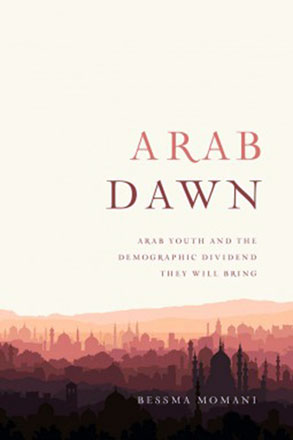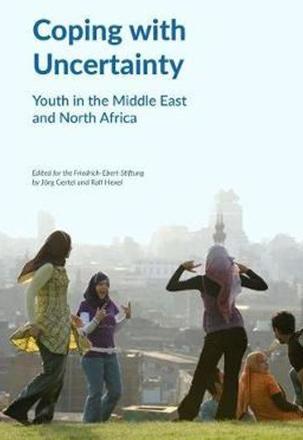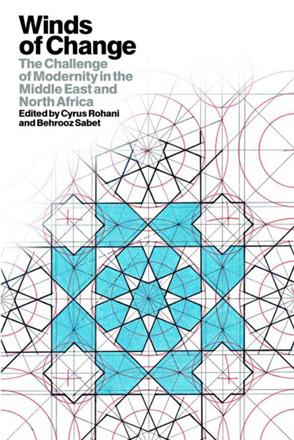You are here
The transformative power of youth
By Sally Bland - Nov 29,2015 - Last updated at Nov 29,2015
 Arab Dawn: Arab Youth and the Demographic Dividend They Will Bring
Arab Dawn: Arab Youth and the Demographic Dividend They Will Bring
Bessma Momani
University of Toronto Press, 2015
Pp. 163
This book is like a breath of fresh air, injecting optimism into the dismal picture usually painted of the Arab world in the wake of the 2011 popular uprisings. Based on surveys and interviews in Morocco, Egypt, Jordan and the UAE, and among Syrians, Qataris and Saudis studying in Canada, Bessma Momani contends that the transformative power of Arab youth, so apparent in these uprisings, has not been depleted, but is just beginning. Momani is Associate Professor at the University of Waterloo in Canada. Of her encounters with Arab young people, ages 15-24, she writes, “I was frankly surprised that, despite their differences, youth from across the socio-economic and educational attainment spectrum often shared much of the same outlook.” (p. 5)
“Arab Dawn” musters powerful arguments and a vast array of statistics to delineate this new outlook, how it differs from that of previous generations, and how it can be a powerful force for much-needed political, economic and social change. The book examines what Arab youth want and how they think about the world, covering attitudes towards education, work, politics, women’s role, social relations, modernity and faith. Momani leverages their outlook to counter Western myths about Arab exceptionalism, such as that Arabs want a strongman as leader or, unlike the rest of the world, are adverse to democracy and modernity. Arab youth’s outlook also challenges governments in the region, for it must be matched by new policies if the demographic dividend heralded by this highly educated, creative and internationally connected generation is to be actualised.
“Arab youth are more politically engaged than their elders ever were… they are using new tools, including digital technology, to further the conversation about the need for political reform.” (p. 71)
They want their government to be accountable, not autocratic; they expect it to promote the prosperity they feel they deserve in light of their accumulating educational credentials. Having grown up amidst rapid urbanisation, globalisation, economic liberalisation and a surge in higher education, not least for women, they are less reliant on state employment, and more highly skilled and entrepreneurially inclined than past generations.
Momani also examines the meaning of young people’s increased religiosity as connected to their search for dignity and justice. “With so much corruption and inequity surrounding them, religion provides a useful moral compass to redirect their energies and faith in society.” (p. 73) Significantly, they aspire to be both modern and religious. “Unlike previous generations, today’s Arab youth are more apt to reject binary views of their identities as Western versus Eastern, secular versus religious, and individualistic versus family oriented.” (p. 95)
Particularly interesting is the concept of circularity as opposed to past immigration patterns. Momani sees benefit in the fact that “Arab migration exceeds the global average”. (p. 98)
This need not mean brain drain since today’s immigrants tend to keep connections to their country of origin, visit often and be involved in its political and economic life. With circularity, immigrants don’t just send remittances, but “bring back knowledge, capital, experience, and professional networks that benefit their home countries”. (p. 110)
The overall thrust of Momani’s analysis is right on the mark, but a few of her conclusions are a bit facile, such as directly linking the development of critical thinking with the amount of time spent online (p. 56) or contending that in the past, outside the Gulf region, “Discrimination against people of faith was felt in all levels of society.” (p. 71)
The serious flaw in her analysis, however, is completely discounting the negative impact of Israeli and US policy when discussing sectarianism. It is also inexplicable to state that “one should take comfort in the knowledge that the vast majority of Arabs have negative views of movements such as ISIS [Daesh], Al Qaeda, Hizbollah, and Hamas,” lumping together two patently terrorist groups with the two latter ones, which arose in response to Israeli occupation. (p. 128)
Fortunately, these analytical flaws do not impinge on the veracity of the book’s main argument that “Arab youth are tackling economic, political and social failings in creative and innovative ways” that can catalyse positive change in all fields. (p. 10)
This timely and relevant message needs to be heard by educational institutions, governments, planners and the private sector if youth’s potentially revolutionising contribution to society is to be realised.
Related Articles
Coping with Uncertainty: Youth in the Middle East and North AfricaEdited by Jorg Gertel and Ralf HexelLondon: Saqi Books, 2018, 380 pp
Winds of Change: The Challenge of Modernity in the Middle East and North AfricaEdited by Cyrus Rohani and Behrooz SabetLondon: Saqi Books, 2
AMMAN — A recent Arab Barometer report shows that nearly 50 per cent of Jordanians wish to immigrate, 93 per cent of whom are motivated by e



















